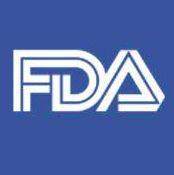Pew Charitable Trusts Releases Guide for Conducting a Food Safety Root Cause Analysis

While foodborne illness investigation methods continue to evolve to keep pace with changing hazards, technologies, and food production, processing, and distribution systems in an increasingly globalized food supply, Pew Charitable Trusts maintains that investigation methods for identifying the root causes of food contamination have not yet been harmonized across food industries, regulatory agencies, academic institutions, and other key stakeholder groups.
Effective execution and communication of root cause analysis can foster collaboration, trust, and knowledge-sharing among food producers, regulatory and nonregulatory agencies, and consumers. Root cause analysis also makes good business sense, because smoothly running operations have less downtime, fewer quality and safety holds, and improved employee morale.
The purpose of Pew’s new guide is to improve food safety by encouraging the use of root cause analysis in food operations and by safety regulators, and the sharing of information and lessons learned from these investigations. Food operations may include manufacturing and production facilities, farms, restaurants, caterers, or any other business that grows, handles, processes, distributes, prepares, or serves food. Food safety regulators include national, state, and local health agencies engaged in public health protection, inspections, and investigation of foodborne illness.
Pew’s guide is based on research on root cause analysis in other industries as well as in-depth discussions among key stakeholders involved in food safety, including those that produce and sell food, those that have regulatory oversight over food, and those involved in the identification and resolution of foodborne illness outbreaks. The guide describes practices for effective root cause analysis that, if used routinely, would help identify lessons learned from food safety failures and ultimately prevent foodborne illnesses. The guide provides approaches and rationales for how stakeholders can prepare for and conduct an root cause analysis, report findings and conclusions, and apply lessons learned to prevent recurrence.
This guide is intended for anyone who may conduct or manage an root cause analysis or may be responsible for the allocation of resources to support such analysis at any point along the food production chain. This could include individuals employed by the food industry; federal, state, or local agencies with regulatory oversight over food; public health or agricultural agencies; trade or professional associations; academia; private consulting companies; or other entities with a vested interest in food safety. This group necessarily includes people with varying backgrounds and degrees of experience in an array of settings. Likewise, the factors included in this guide are for consideration in a variety of investigation settings, from assessments in individual farms or food production facilities to analyses of nationwide outbreaks.
See Pew’s Guide for Conducting a Food Safety Root Cause Analysis at PewTrusts.org.
Looking for a reprint of this article?
From high-res PDFs to custom plaques, order your copy today!





